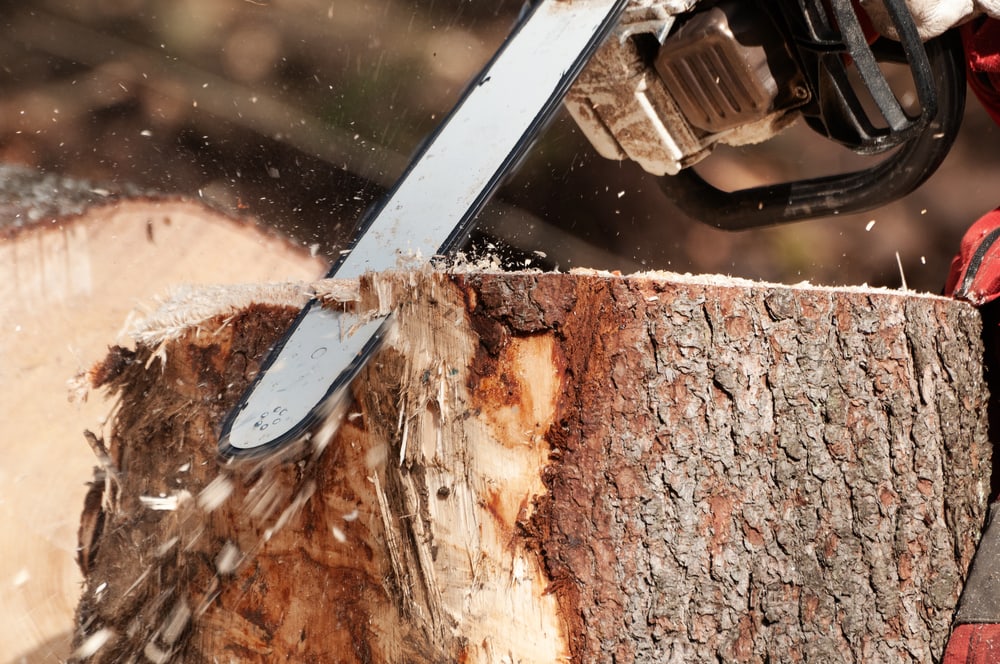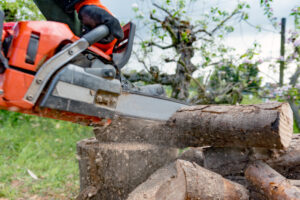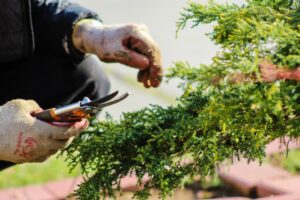Hedge cutting is not easy to master, but if you maintain your hedges trimmed, you will be able to create a more welcoming barrier for your garden. Did you know that garden hedges not only provide a safe haven for wildlife but also help reduce the amount of rainfall, act as a windbreak, and, finally, can assist in the removal of pollution? They are amazing in every way. Because of the many advantages they offer, it is essential to be able to trim hedges and take care of them properly. Following the steps in this beginner's guide to properly cutting a hedge will result in a garden hedge that is attractive throughout the entire year.
Typically, hedges and bushes are considered to be visual aspects of a garden and have a significant impact on the overall appearance of the garden. The first few months of the year are normally the best time to prune your hedges and shrubs, as this is the period of time just before the sunnier and warmer months of the year boost their growth.
Observing hedges that have been trimmed to an exact and even shape provides an oddly pleasing sense of accomplishment. It doesn't matter if you're working with an old, overgrown hedge or a spanking new one; we've put together this easy-to-follow guide on hedge trimming so that you can bring your hedge ideas to fruition. So, what is the proper way to trim a hedge?
When to trim hedges
Formative trimming is necessary for newly planted hedges during the first few years after planting. The winter or the beginning of spring is typically the best time to perform formative pruning.
After this, the hedges are trimmed for upkeep, which is typically done once per year for informal hedges and two times per year for formal hedges. There are formal hedges that may require trimming three times per year. The spring and summer seasons are typically the best times to perform maintenance trimming. If any signals indicate activity, the timing of the pruning should take into account the possibility of birds nesting and should be deferred until after the nesting season, which is generally thought to range from March to August.
When birds are nesting nearby, exercise caution when trimming hedges. In most cases, the later months of winter and summer make good choices. Even if your hedge is just a few years old, you should cut some of the top growth off of it to encourage it to grow more densely.
How to cut a hedge
The clipping or pruning of a hedge using trimmers driven by either electricity or gasoline is a very basic process. People often claim that the first cut is the deepest, but once you get started, you'll find that subsequent cuts are much easier to make. Maintaining a regular trimming schedule for your hedges will promote bushy, dense growth, which is great for use as a garden barrier.
If you get my meaning, dense and lush hedges provide you with seclusion in your garden while also acting as a deterrent to people you don't want there.
- Manual sheers or
- Electric /petrol-powered clippers
This is something that will be determined by the sort of hedge and finishing that you want. Let's take a look at both of these approaches to trim the hedges.
How to use electric clippers to cut a hedge
The 1st thing you should first check is that you wear all the appropriate protective gear
When trimming hedges using electric equipment, it is imperative that you wear safety gear at all times, including gloves, goggles, and boots. You should also ensure that your tools are clean, that their batteries, if they run on batteries, are properly charged, and that they are in good operating order.
Step 2: Determining the appropriate amount to trim the hedges
To maintain their orderly appearance, most hedges are best served by receiving a brief shearing once, twice, or even thrice per year.
When you are trimming any type of hedge, you should try to remove between one and four inches of recent green growth on hedges that are routinely maintained.
If your hedge requires more than this taken off, you might consider doing severe pruning using loppers to eliminate heavy woody growth. You can get further information regarding that here.

Step 3: If you want your hedges to look more formal, add a string line as a straight edge
The top of your hedge can be made tidier and organised by using canes and a thread of string that is strung in a horizontal position between them. This is especially helpful for hedges that are quite long or formal in nature.
The 4th step is to begin your work at the base of your hedge and move your way up
Begin cutting your hedge by working your way up from the bottom using a motion similar to that of a wand. The rationale for this is that you will achieve a better cut due to more obvious control, and it is significantly safer than an approach that works from the top down, which could result in damage if you slide. Employ a motion that sweeps up from the bottom to the top.
The best method to cut something is always from the bottom up to the top.
Take your time, as it is preferable to cut off smaller pieces of a hedge rather than going too far into it and getting caught up in the thicker internal branches.
Step 5: Ensure that your hedge clippers are horizontal
If you want an even cut, you should hold your hedge trimmers horizontally rather than pointing them into the hedge. Hedge clippers are not designed to cut through woody material and should only be used on more delicate, green foliage.
Ensure you're not stagging your clippers. If you are using hedge clippers and discover that they are catching on the material you are attempting to cut, either the material is too thick, or the hedge clippers need to be sharpened. In the event that the material is excessively thick, consider utilising loppers to trim back the material that is woodier.
Step 6: Take a step back and assess your current position
Always taking a step back to get a better look at the situation is a smart approach. After all, one can always chop more off, but once it's gone, it's gone forever!
Step 7: Recycle the cuttings from your hedges
On your compost heap, you should be able to recycle almost all of the clippings. Make use of a garden shredder to reduce evergreen cuttings into smaller pieces in order to hasten the process through which they decompose. Be very careful while working with thorny bushes such as berberis or hawthorn since their thorns can make the compost you're handling extremely unpleasant to work with.
Step 8: After finishing each cut, mulch your hedge
The application of mulch is recommended, particularly for newly planted or young hedges. It is a method that assists in retaining moisture and provides a slow-release feed after the meat has been chopped. A healthy organic compost that does not contain peat or leaf mould mulch applied at the base of the hedge can assist in establishing new hedges.
How to use hand shears to trim a hedge
Hand shears and electric hedge trimmers perform the same function; however, using hand shears requires a higher level of dexterity and precision than using the electric version. This is due to the fact that you are not only manipulating them in a wand-like motion but also closing and opening the shears to allow them to cut.
Step 1: Check the sharpness of your hand sheers
In addition, you will have to clean, and polish hand shears a great deal more frequently to provide them with the level of precision required. However, when your hedges are neat and tidy, the effort will have been more than worthwhile. The smoother cuts will heal more quickly and prevent the hedges from turning brown and crispy after being trimmed, which is a common side effect of the more ragged cuts produced by other hedge trimmers.
Step 2: Carefully and slowly trim the hedge
When cutting hedges with hand sheers, our recommendation is to take off only a small amount at a time until you reach a point where you are comfortable. When clipping and cutting the side of a hedge, make sure to hold the shears in a vertical position. To prune a hedge, you should employ the same motion. When cutting the top part, I rotate them clockwise.
Step 3: In between the bushes, clean and disinfect your sheers
It's essential to clean your sheers in between each hedge when trimming boxes or other formal hedges. This is due to issues with plant health, such as Box Blight or fungal diseases, as well as other pests. Cleaning hand sheers is as simple as immersing them in a pail containing a solution consisting of one bleach and ten parts water.
Step 4: Turn the sheers as you cut the top
You can more easily trim the top of a hedge if you rotate the shears to be horizontal. If you hold them horizontally rather than leaning them, it is much simpler and less awkward.
Step 5: Mulch the hedge with your recycled clippings
In the same way that you would with the electric approach, you should mulch any freshly planted hedges and then compost your grass clippings.
How often should I trim my hedge each year?
This is something that is dependent on the type of hedge that you have, such as whether it is extremely formal, informal, slow-growing, or fast-growing.
Because it is far simpler to slice through new growth than it is to slice through old growth, it is preferable to prune twice a year.
This may be done anywhere from four to six times yearly for more formal hedges.
When to trim a new hedge?
When you first plant a new hedge, some people may be inclined to think that you shouldn't trim it until it reaches the size that you want it to be.
In all honesty, if you want a newly planted hedge to reach its desired height and width in a way that is not detrimental to its health, you will need to perform some formative pruning during the first few years after planting it. This entails cutting back immature growth to stimulate the growth of a robust trunk and the development of thick branches.
When the hedge has grown to the required height, you can begin performing the maintenance trimming of the hedge in accordance with the stages that we have outlined above.
Where should you start, and in what direction should you cut?
In most cases, when trimming a hedge, you should make upward strokes with the hedge trimmer to get the best results. This is done mostly for safety reasons; in the event that you strike a snag, it is preferable to pull the tool closer to you rather than push it in the direction of your leg. If you do decide to sweep both ways, you must exercise extreme caution when doing the downward sweep.
When trimming hedges to a height that reaches the chest, begin at the sides and work your way up. When trimming larger hedges, begin at the top and work your way down. A chainsaw or pole saw may be necessary for this task.
Giving Your Hedge a Straight Edge
It is more likely that you will come across hedges with straight edges. As a result of their frequent application in the task of delineating property lines, this type of hedge is frequently referred to as a formal hedge. It is not difficult to give your hedge a straightforward "top, back, and sides" appearance.
Hedge cutting can be done visually with smaller hedges using an electric hedge trimmer. The user should stop the trimmer frequently, step back, and inspect to make sure the hedge is straight.
It is advised that you drive two different stakes into the soil at either end of larger hedges. One stake should be placed at the beginning of the hedge, and the other should be placed at the end. To make a straight line, first, secure a piece of string at the desired cutting height and then draw the string so that it is taut. After that, this can be utilised as a cutting guide to guarantee that the hedge is trimmed in an even manner.
Cutting a Square Hedge
When it comes to the fundamentals, trimming a square hedge is very similar to trimming a straight line. A straight and sweeping motion with your hedge trimmer should be used to make the flat top. To do this, use a thread that is stretched taut and place it between two garden canes.
If you want the edges of the box to be flat, use the garden canes as a guide once more, but this time make sure they are standing up completely straight. Raise the hedge cutter from the bottom of the hedge, ensuring that it remains properly aligned with the garden canes as you do so to maintain a level surface.
Giving Your Hedge a Slope
Before you start cutting a slope into your hedge, you should first draw up a plan for how you want it to appear. Make sure that the sunshine can reach all of the parts of your hedge. If this does not occur, these areas may turn brown and eventually perish. Always make sure that the base of your hedge is the area that is the largest.
Create a guide for yourself to use in the process of establishing a straight edge by employing the same concept with the string fragments and the wooden stakes. Start at the bottom of the slope you want to create with the hedge trimmer and work your way up, gradually reducing the amount you cut away as you get closer to the top.
It's possible that your electric hedge trimmer won't be able to make it through dense areas or thick branches if you're trimming older shrubs. It will be much easier for you to cut through the larger branches if you have a pair of manual hedge cutters or saws that are in good shape.
Cutting a Round Hedge
Beginning your cut approximately three inches from the peak of the hedge will allow you to get a rounded shape. You will need to rely on both your eyes and your instincts to achieve the curve. Move the hedge trimmer away from your body and towards the top of the hedge while maintaining the angle at which it is held. To ensure an even finish, it is important to repeat this action as you proceed around the hedge.
There is, alas, only one method to construct this shape, and that is by using your eyes alone unless you plan to employ wire mesh. This indicates that you ought to have some experience working on a hedge that is not as noticeable before you attempt to design a feature.
Cutting Different Types of Hedge
Some hedging plants, such as hawthorn, privet, conifers, and box, grow to be quite tall, making them ideal for creating spirals and other topiary patterns that require more height. Others, like beech and hornbeam, are a little bit more stocky, and as a result, they are better suited to smaller designs.
The box is typically the finest choice for formal hedges since it has dense growth and thin leaves, making it ideal for easy shaping and upkeep. Informal hedges, such as rhododendrons or hydrangeas, are significantly more challenging to construct since the plants' leaves are much larger, and they have their own preferences for how they prefer to be positioned. Leave the peacock shapes to be created by other types of hedges, even if it is highly recommended that you prune them for maintenance.
Always keep in mind that the vast majority of hedges prefer to have their pruning or shaping done during their dormant season. This means that flowering or fruiting hedges should not have their pruning or shaping done until after the bouquets and fruit have fallen off. If you prune your hedge towards the beginning of spring, it will have plenty of time to recover and become full again when summer rolls around.

Trimming techniques
Hedge shears that are handheld are suitable for trimming smaller hedges, but for larger hedges, you will find that using an electric or gasoline-powered hedge trimmer is more convenient. Always make sure the tools you're using are sharp and well-lubricated, no matter what you're working with.
When operating a powerful hedge trimmer, your safety should always be your top priority. Put on safety goggles and gloves made of durable material. It is important to clear the ground of any obstructions before beginning. When working over shoulder height, you should avoid utilising powered tools and instead make use of solid step ladders or platforms, making sure to check that they are stable. Electric hedge clippers work best when used in conjunction with a residual current device, often known as an RCD, and should never be used in wet environments. Placing the cable over your shoulder will protect it in the event that it is snipped by accident. Additional safety recommendations can be found in our guidance on the use of electricity in outdoor settings.
Formal hedges
If they are pruned on a consistent basis, the breadth of even robust hedges does not need to be any wider than 60 centimetres (2 feet). Formal hedges should have a modest taper on both sides, meaning that the base should be broader than the top and that light should be able to reach all the way to the bottom. The process of cutting the hedges into a batter has a number of names.
If you want an even and symmetrical hedge, be sure to follow these tips:
- It can be challenging to cut straight, precise edges by using only your eyes. As a reference for cutting the top of the bush level, you can use a tight horizontal rope that is strung between two sturdy canes. When drawing vertical lines, canes or stakes that have been driven into the ground are helpful.
- Cut a model of the desired shape out of cardboard or plywood and use it as a guide while shaping the tip of the hedge into a specific form, such as an arch. Put the template on top of the hedge, and then cut down the line that is drawn on the template while moving it along as you work.
- When trimming a hedge using shears, it is important to keep the blades of the shears level to the line of the hedge to get a level and flat cut at the top of the hedge.
- When trimming a hedge using a hedge trimmer, keep the blade perpendicular to the hedge and work your way up from the bottom of the hedge using a wide, sweeping motion so that the cut leaves can fall away.
Informal hedges
The process of trimming an informal hedge is very similar to the process of pruning typical bushes. Please refer to the websites provided below for more detailed information on how to prune shrubs;
- Shrubs: pruning early-flowering
- Shrubs: pruning evergreens
- Shrubs: pruning summer-flowering
In general, when trimming informal hedges, you should eliminate any shoots that are in the wrong position and cut the hedge down to the size it should be. In order to avoid unattractive leaf damage, prune with secateurs or loppers whenever it is possible to do so, particularly if the hedge has large evergreen leaves.
Problems
It is against the law to harm or damage the nest of any wild bird while it is being made or while it is in use; therefore, before beginning work on garden hedges, check to be sure that no birds are currently nesting in them. Immediately come to a halt with your job if you suspect that birds are there. In the event that it is required, the work can be put off until after the month of August has ended.
It is important to remember that you should not trim conifer hedges beyond the month of August, as doing so may cause bare spots to grow in the hedge. Yew can be pruned up until the beginning of autumn without risk (September). When pruning Thuja hedges, it is best to wear long sleeves in addition to gloves and goggles. This is because some gardeners have experienced skin irritations after handling Thuja (western red cedar) trimmings.
It is not uncommon for boundary hedges to eventually grow to the point that they dangle over the sidewalk or roadway. We recommend that these be pruned so that they do not obstruct pedestrians. Even hedges that are meticulously maintained can gradually expand over the course of several years; while the majority of evergreen hedges, both deciduous and broadleaf, are amenable to renovation, certain types of hedges, particularly many conifer hedges, are greatest replaced when they become overgrown.
Cut different types at different times
If you have several various kinds of hedges, you might be attracted to getting them all done simultaneously, but there are advantages to trimming hedges at specific periods of the year.
The best part is that you won't have to spend a lot of time toiling away in the garden because the majority of hedges only require to be trimmed once or twice a year.
The following are some of the finest times to trim your hedges:
- Beech hedges should be trimmed in August to guarantee that there will be no bare spots over the winter. If they have become unmanageable, you may need to perform severe pruning in the middle of winter as well.
- If you want your hawthorn hedges to seem neater, give them a trim in June, after the flowers have fallen, and then again in the fall.
- Laurel hedges should be trimmed in the spring if they need to be reshaped and then again in July and August each year to keep them in good shape.
- Privet hedging should first be pruned in April, and subsequent cutting should occur between May and August. The more you practise it, the dense it will become, and the simpler it will be to keep up.
Can I renovate old hedges by trimming?
In the event that you are dealing with an overgrown hedge – perhaps after you have inherited it upon moving homes – it is possible to bring it back to health, but it will require some time and patience on your part.
You will want to use a chainsaw to significantly reduce the height of the hedge and trim it back as close to the ground as possible. You might even consider trimming it down to a height of just 1–1.2 metres if space is an issue. This will encourage quick new growth throughout the stems, which you can then prune back and shape as it grows over time.
Hedge Cutting Summary
If you stay on top of your hedge trimming and plan ahead, it doesn't have to be much work to maintain its appearance. Hedge trimming can be a piece of cake if you have the correct equipment and approach to it; this is especially true if there are ice-cold beers and a barbeque waiting for you at the job's conclusion. Why not make it a pleasant event and make your neighbours green with envy with your lovely hedge that requires almost no maintenance at all?
If it seems to you that caring for a hedge is too much for you, contact us, and we will help you!
Frequently Asked Questions
What's the Best Technique for Cutting Hedges Like a Pro?
The best technique is to start from the bottom and work your way up, trimming in a sweeping motion. This will let the cut foliage fall away and not hinder your progress. Hedges should also be slightly wider at the base than the top, a shape known as a 'batter'. This allows sunlight to reach the bottom of the hedge and promotes healthier growth.
How Can I Achieve a Straight Cut on My Hedges?
To achieve a straight cut, it can be helpful to use a guide. This can be a piece of string tied between two stakes to give you a straight line to follow. Alternatively, there are laser-guided hedge trimmers available on the market that can help you achieve a precise cut.
How Do I Maintain My Hedge Trimmer?
Hedge trimmers, like all garden tools, need regular maintenance. After each use, clean the blades to remove any plant material. Oil the blades regularly to prevent rust and keep them operating smoothly. Regularly check the power cord or battery of your trimmer for damage. If you notice the trimmer becoming less effective, the blades may need sharpening. Always refer to the manufacturer's instructions for specific maintenance guidelines.
What Should I Do with the Gap in My Hedge After Trimming?
If you end up with a gap in your hedge after trimming, the best course of action is to be patient. Most hedges will fill in over time. You can encourage new growth by applying a balanced, slow-release fertilizer. In the case of a large gap, you might consider planting a new bush to fill in the area.
How Can I Dispose of Hedge Clippings?
Depending on your local regulations, you might be able to compost hedge clippings, put them in your green waste bin, or take them to a local recycling centre. Some areas may allow you to burn hedge clippings, but it's essential to check local ordinances and be mindful of safety. Alternatively, you can also consider using a garden shredder, which will turn your hedge trimmings into mulch that you can then use in your garden.







